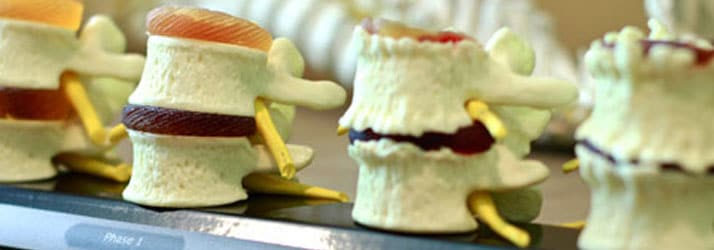3 Life Lessons From Wing Chun Practice
3 Life Lessons From Wing Chun Practice

I have committed to a daily meditation practice for 8 years. This practice has taught me how to connect to the vast cavern of quiet stillness that resides behind all of the brain chatter which can, if left unchecked, run our lives and cause inordinate amounts of suffering. Eventually I began to yearn for a martial art that would allow me to draw upon this reservoir of silent power and put it into action. Enter Wing Chun.
Although I continue to flush out exciting relationships between Wing Chun and life in general, I want to focus on three profound life lessons that struck me immediately as I began my spiritual journey into the heart of Wing Chun.
1. Move Forward And Lean into The Sharp Points
A common saying that any fledgling Wing Chun enthusiast will encounter is: "Greet what comes, escort what leaves, and rush on loss of contact." "Greet what comes" means that when an opponent directs a blow at you, the first goal is move forward and to make contact with that energy-not to back away-so that you gain some control. The point is to meet the offensive energy head-on. If someone withdraws an attack, you follow it and "escort" it away, but not so far away that you lose your center. And if you feel a gap or a hole in your opponent's defense, you "rush on loss of contact" with a fierce attack. The principle here is forward motion.
Naturally, when someone strikes, the usual response is to flinch or to withdraw. But this simply allows your offender to "rush," as a gap has opened in your defense and contact has been lost. This reminds me of readings in Buddhist philosophy which explore "leaning into the sharp points" of life. Wing Chun is the perfect example of this idea. When the steepness of the mountain becomes more offensive, you must dig in and summon up greater energy to meet its demand so that you can overcome it. The most exquisite vistas are only experienced via the effort and forward intent of the climb. This is true of so many aspects of life. Leaning into the sharp points means that you can experience the greatest joy by looking life right in the eye and meeting it head on, including its more challenging or unsavory aspects. The difficulty of the climb is largely related to how great and expansive the resulting view will be.
What are the "sharp points" in your life? Does the anxiety you feel preparing to speak in public cause you to avoid the occasion altogether with a timely excuse? Do you then slink away and suffer the emotional pangs that come from knowing you've failed to express your potential yet again? Or do you meet the nervousness head-on, bravely risking judgement and rejection so you can feel the thrill of sharing your message with an audience?
So, the next time you greet an opponent's strike with a bong, roll your arm into a tan to cast the strike aside and finish with a palm strike, marvel at the lesson contained within that Sil Lim Tao form. At its very core lies the simplicity of "leaning into the sharp points" with forward intent, and therefore moving bravely into your own potential as a human being.
2. Just Enough
As newbies to any physical pursuit, we often focus our concentration on the basics of the physical movement because the nerve connection pathways to our muscles are not yet developed. But too much concentration invariably creates rigidity. Think of your very first golf swings, or awkwardly trying to serve your first birdie in badminton. Regardless of the new endeavor, your brain is not yet focused on the essence of the flow of movement. Rather, your brain directs too much attention here or there, making your movement pattern rigid, clumsy, and lacking flow.
The Wing Chun practice of Chi Sau or "rolling" makes this relationship of concentration and rigidity very apparent. When you are rolling in this sensitivity drill with a partner, you are simultaneously reading the energy in your partner's movement pattern in order to find a hole in their defense while directing attention into your own defense. Both of your hands are doing different things in an energetic dance that is completely different every time you do it. This drill teaches you not to push too much attention into either of your hands, but rather to intuitively feel the overall energy exchange happening with your partner. If you are caught placing too much intent on setting up your attack, it will lead to a rigidity that your partner will immediately feel and be able to exploit.
The key is to drive "just enough" concentration into each of your arms so that your movements are swift, exacting and capable of unleashing lethal attacks should the right gap appear in your opponent's defense-but not so much that your intentions are recognizable and felt by your opponent.
Have you ever felt yourself gripping or grasping something much harder than is required to get the job done? I often find myself gripping the handlebar of my mountain bike with more pressure than is necessary on a steep incline, wasting valuable energy that could be redirected to efficiently drive the powertrain, which is far more useful. Or maybe you know someone who over-grips the steering wheel when they drive, white-knuckling at 10 and 2. This sort of rigid grip creates a jerky ride and decreases reaction time.
This lesson has profound implications for your life. Imagine that your health can be symbolized by a wheel, with each spoke representing the different aspects of your physical, emotional, mental, and spiritual well-being. If you place all of your attention on one spoke only, the wheel as a whole will immediately spin out of balance, becoming ovoid rather than circular. Imagine riding a bicycle with an oval tire-not exactly smooth sailing! We often see people, for example, who place too much importance on their physical self, resulting in the risky behaviors we commonly see like fad diets, plastic surgery, steroid use, eating disorders, etc. You get the idea. Too much attention paid to any one area of your being can lead to an immediate loss of balance.
Observe whether there are any examples in your life where you pay too much attention, or not enough, to any one thing. Is it causing a rigidity that is dampening your overall performance, health, or preferred outcome? Are you overly frugal, taking coupon-cutting to the extreme? Do you place too much attention on your child's progress, fretting and worrying about every bump, scrape or bad grade?
As a chiropractor, I see hundreds of patients who experience muscle tension in certain parts of their bodies. When I ask them if they can try to focus their attention and relax, they often find that they have the ability to voluntarily reduce the tension in that area. It's as though their body has become wired in a specific muscle-stress program that creates pain and imbalance, but when attention is directed to smooth out this tension, the problem abates. Try focusing on how much tension you hold in your jaw, or in the area between your eyebrows. These are examples of just these types of muscle-stress programs, and many of them can be helped simply by smoothing out that energy with simple focus from within.
There are many examples of how our imbalanced attention can cause the flow of our bodies, minds and lives to get all jammed up. I think the essence of a life well lived is exemplified in Wing Chun practice-placing "just enough" attention on exactly what is necessary in the dance of life to allow yourself to heal, explore, grow and conquer new personal frontiers.
3. Path of Least Resistance
In Wing Chun practice, if a hole opens up in your opponent's defense, you must strike with a fierceness that is meant to end the fight as quickly as possible. If your strike is deflected or blocked, you are trained to instantly drop the attack's intent, allowing the rigidity of your strike to dissipate. This prevents the rigidity from being used against you; your opponent could use your stiff arm as a lever to throw you off or to pull your body into their next attack.
All of your strikes and hand forms require full commitment in each moment-just until the exact micro-second when your intent must change in response to your opponent. The moment that your blow is deflected or blocked, you must immediately allow your hands to become flaccid in preparation for the next attack.
In so many of life's pursuits, we set a specific path in order to achieve a goal. It is all too easy to become rigid in that plan as we encounter barriers or conflicts. When things, people, or circumstances block our intended path, many of us react with pride, fear, anxiety, or anger, often making the goal much more difficult-or impossible-to attain. We get stuck on negative emotional states, and as we get older, our viewpoints can become more focused, we can become judgemental, we can develop less tolerance because of our opinions, and we can get hung up on all our preferences. I once heard, "If you want to suffer, have many preferences".
Intuitive essence can be felt in the spaces between seconds during Wing Chun practice. You can literally feel how over-commitment to a strike will create an advantage for your opponent. You can feel how if you meet strong resistance by a deflection or block, you must flow around the resistance and become flaccid, opening yourself up to a new path. That path is still in the direction of your goal, but now it allows the current of life to guide you, just as water flows effortlessly around rocks. And what a beautiful lesson is that?
Office Hours
Monday
7:00am - 7:00pm
Tuesday
7:00am - 7:00pm
Wednesday
7:00am - 7:00pm
Thursday
7:00am - 7:00pm
Friday
7:00am - 7:00pm
Saturday
8:00am - 1:00pm
Monday
8:00am - 8:15pm
Tuesday
8:00am - 8:15pm
Wednesday
8:00am - 8:15pm
Thursday
8:00am - 8:15pm
Friday
8:00am - 8:15pm
Saturday
9:00am - 2:00pm
Monday
10:00am - 6:00pm
Tuesday
10:00am - 6:00pm
Wednesday
8:00am - 4:00pm
Thursday
10:00am - 6:00pm
Friday
8:00am - 2:00pm
Saturday
Closed
Arise Chiropractic and Wellness
100 Kalamalka Lake Road #7
Vernon, BC V1T 9G1
Chiro / Massage:
(250) 275-7616
Physiotherapy:
(250) 309-1346
Fax:
(250) 275-7618

